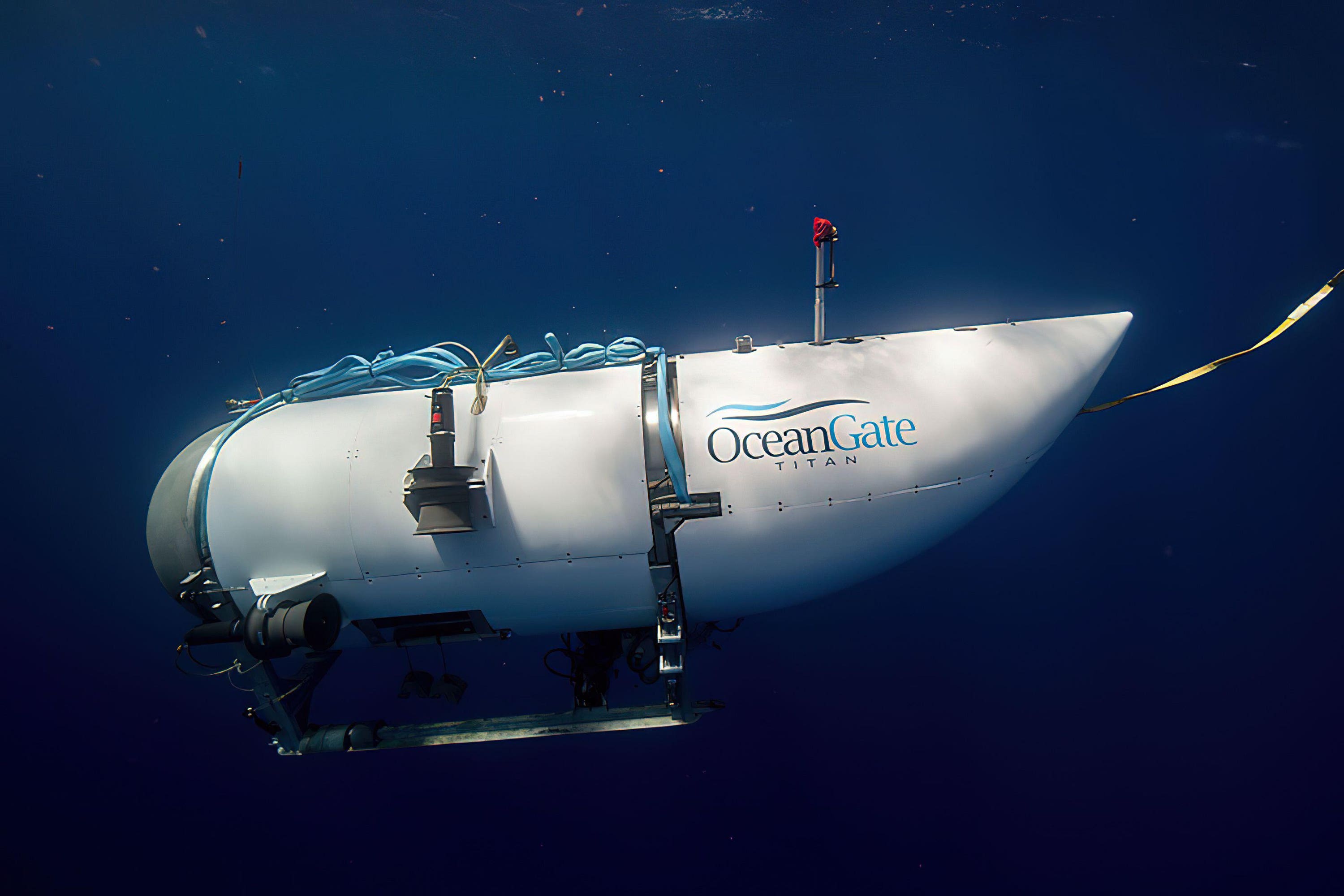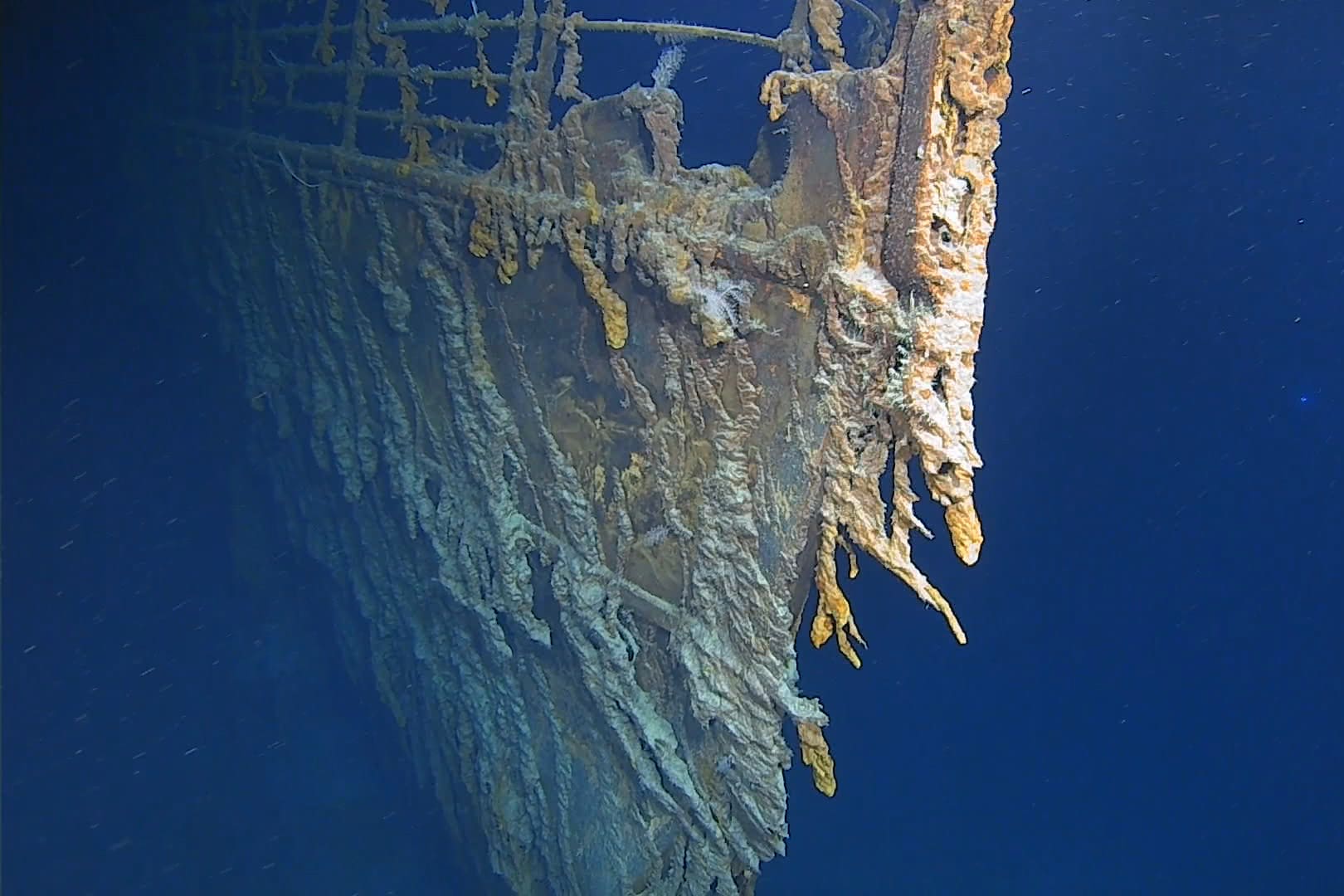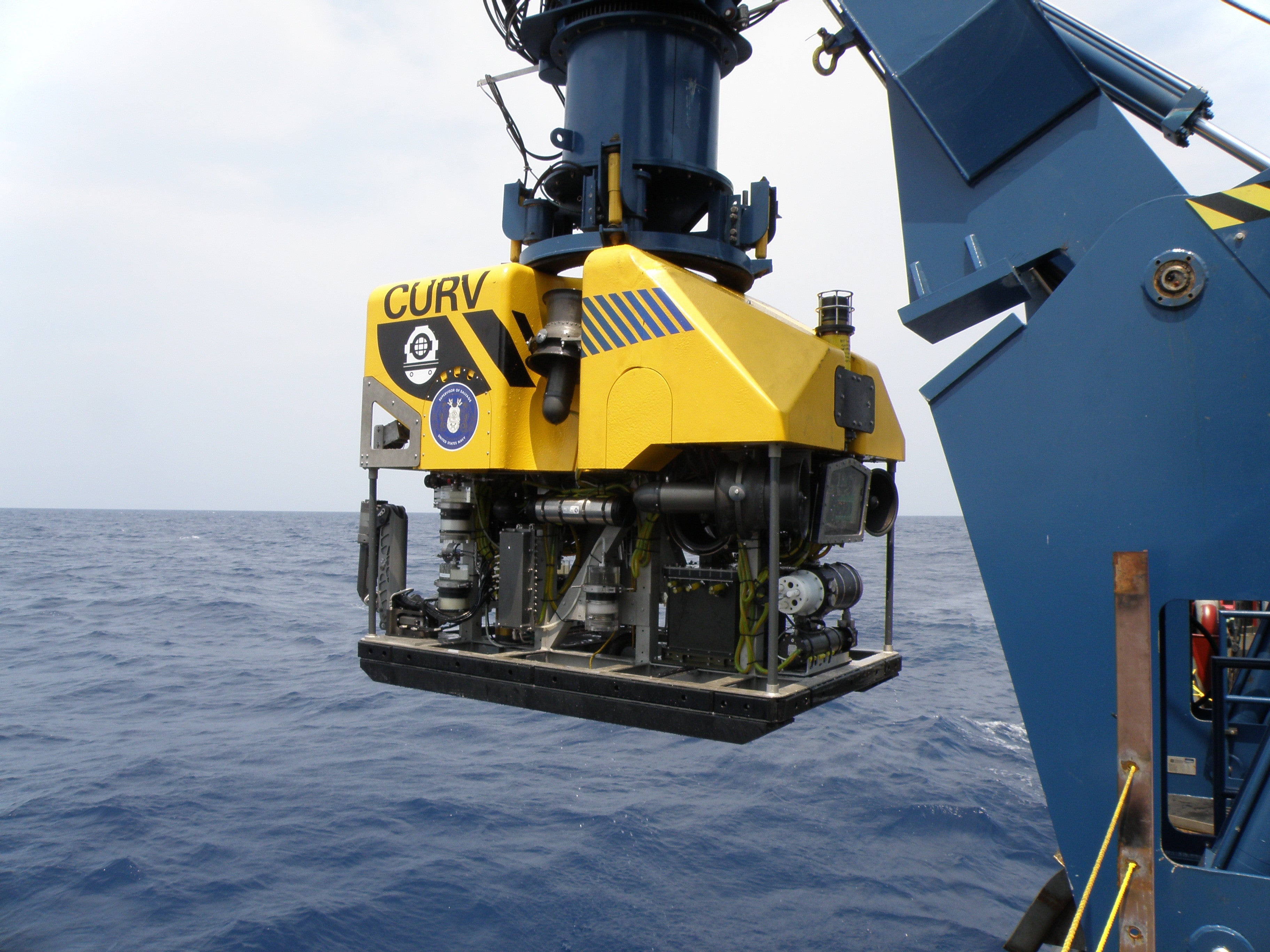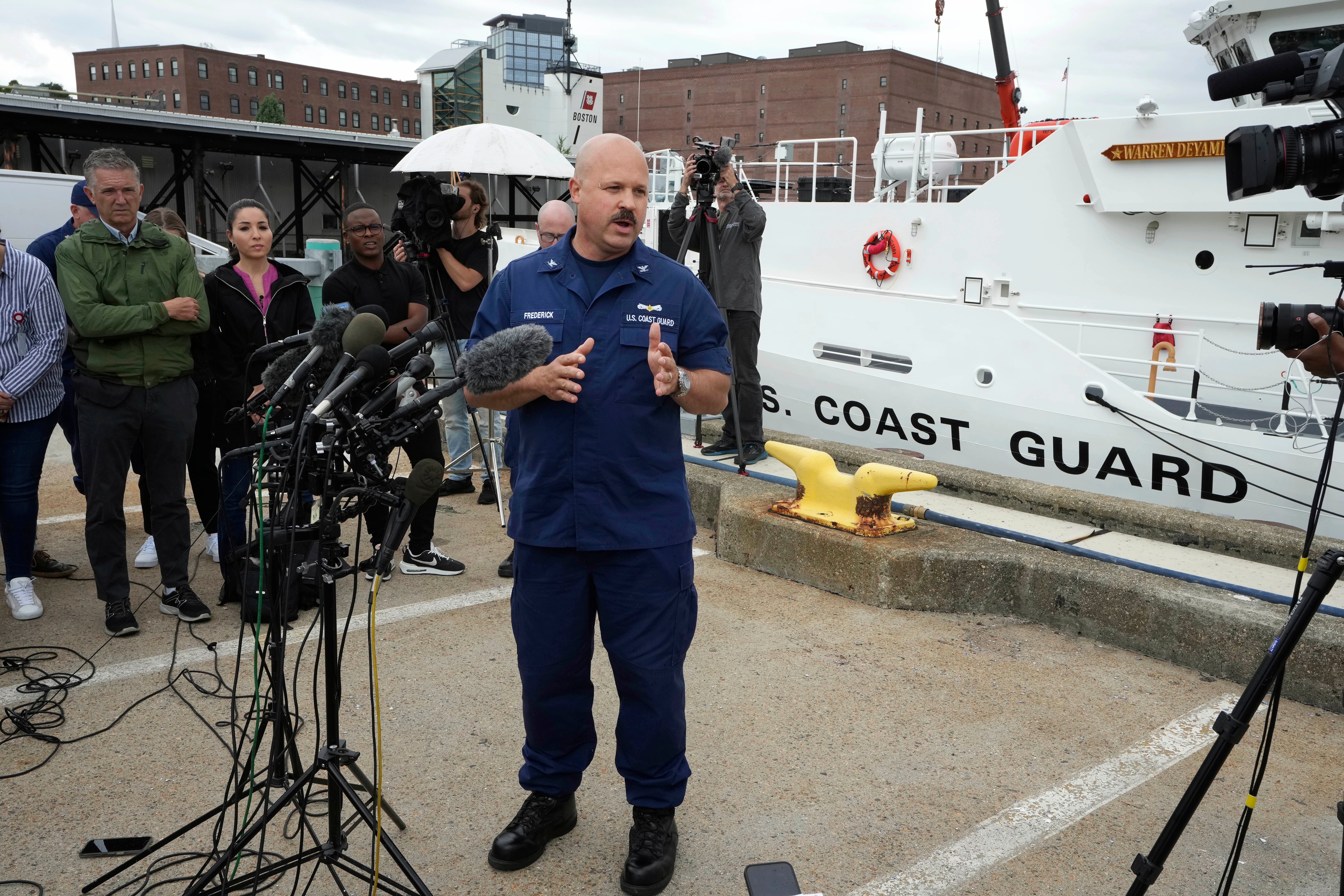
On Saturday night, billionaire explorer Hamish Harding took to Instagram to reveal he was among the crew of a submersible vessel on their way to explore the Titanic wreckage.
“I am proud to finally announce that I joined OceanGate Expeditions for their RMS TITANIC Mission as a mission specialist on the sub going down to the Titanic,” Mr Harding wrote.
“Due to the worst winter in Newfoundland in 40 years, this mission is likely to be the first and only manned mission to the Titanic in 2023. A weather window has just opened up and we are going to attempt a dive tomorrow.”

Mr Harding said the five-member crew, which included French diver Paul-Henri Nargeolet, Pakistani businessman Shahzada Dawood and his son Sulaiman Dawood, had set sail from St Johns, Newfoundland, Canada, on Friday.
They were planning to start their 4,000m descent to the most famous shipwreck in the world at 4am on Sunday morning. “Until then we have a lot of preparations and briefings to do,” he said.
Sunday
The Polar Prince icebreaker sailed around 900 miles off the coast of Newfoundland, where it set anchor.
The five-person crew was dropped into the ocean in their 22-foot long submersible vessel, the Titan, at 7.30am EST on Sunday, Mr Harding’s close friend Jannicke Mikkelsen told The Independent.
Just over two hours later at 9.47am, the vessel lost contact with the Polar Prince, according to Ms Mikkelsen.
The vessel was programmed to send out a “ping” every 15 minutes to indicate its location. The final signal was sent at around 10am ET, according to The Times.
There has been no further contact with the vessel since.
The Titan typically takes around two hours to reach the Titanic wreckage, located about 4,000m beneath the ocean.

According to CNN, it had been due to resurface nine hours after beginning the mission at around 1.30pm ET.
When it failed to resurface, the crew raised the alarm with authorities 25 minutes later.
At a press conference in Boston, Captain Jamie Frederick, of the US Coast Guard, said: “On Sunday, the co-ordination command centre in Boston received a report from the Canadian expedition vessel Polar Prince of an overdue 21 foot submarine, Titan, with five people on board.
“The Titan was attempting to dive on the wreck of the Titanic, approximately 900 miles east of Cape Cod and 400 miles south of St John’s, Newfoundland.
“Approximately one hour and 45 minutes into the scheduled dive, the Polar Prince lost all communication with the Titan, Polar Prince conducted an initial search and then requested Coast Guard assistance. The US Coast Guard in Boston assumed the responsibility of search-and-rescue mission co-ordinator and immediately launched search assets.
“Since Sunday, the Coast Guard has co-ordinated search efforts with the US and Canadian Coast Guard, Air National Guard aircraft and the Polar Prince (the Titan’s mother ship), which has searched a combined 7,600 square miles, an area larger than the state of Connecticut.”
The vessel was carrying enough oxygen for the crew for 96 hours — making the rescue mission a race against time to reach the vessel.

Monday
On Monday morning, authorities revealed the Titan was missing and a large-scale search operation had been launched.
The US Coast Guard revealed they had begun a sweeping search of a 5,000sqm area about 900 miles off the coast of Cape Cod, Massachusetts. The Canadian Coast Guard said it too is taking part in the effort with fixed wing aircraft and a ship.
At 1.30pm, the US Coastguard’s Northeast tweeted that a C-130 Hercules reconnaissance aircraft had been dispatched to search for the Titan.
P8 Poseidon aircraft with underwater sonar capabilities joined the search on Monday afternoon.

“It is a remote area and it is a challenge to conduct a search in that remote area but we are deploying all available assets to make sure we can locate the craft and rescue the people onboard,” US Coast Guard Rear Admiral John Mauger told reporters during a briefing at 4.30pm EST on Monday.
Submersible craft including an unmanned US Navy Curv-21, which can reach depth of 4,000m, also joined the search.
The Polar Prince and 106 Rescue Wing continued to conduct surface searches throughout Monday evening.
Tuesday
On Tuesday, Oceangate confirmed that its chief executive and founder Stockton Rush is “aboard the submersible as a member of the crew”.
A Canadian Aircraft P3 Aurora joined the effort, as the search area expanded to 10,000sqm.
During the press conference on Tuesday, Captain Frederick said there were around 40 hours of oxygen left on the submersible.
He said that a “unified command” of multiple agencies had been formed to tackle the “very complex problem” of finding the vessel but so far this had “not yielded any results”.
Captain Frederick said: “Since Sunday, the Coast Guard has co-ordinated search efforts with the US and Canadian Coast Guard, Air National Guard aircraft and the Polar Prince (the Titan’s mother ship), which has searched a combined 7,600 square miles, an area larger than the state of Connecticut.
“These search efforts have focused on both surface, with C-130 aircraft searching by sight and with radar, and subsurface, with P-3 aircraft we’re able to drop and monitor sonar buoys.

“To date, those search efforts have not yielded any results.”
Captain Frederick was non-committal however when asked if there is any way to retrieve the submersible and save the five on board if it can be located.
“So, right now all of our efforts are focused on finding the sub,” he said.
“What I will tell you is we have a group of our nation’s best experts in the unified command and if we get to that point, those experts will be looking at what the next course of action is.”
It is understood the King is being kept informed of the search efforts, as Shahzada Dawood is a long-time supporter of The Prince’s Trust International and The British Asian Trust, both of which are charities founded by Charles
It was also reported that a Canadian aircraft had detected “banging” noises within the search area over the course of 30-minute intervals.
Wednesday
According to internal e-mail updates sent to Department of Homeland Security leadership, the Canadian aircraft detected “banging” noises every 30 minutes.
“RCC Halifax launched a P8, Poseidon, which has underwater detection capabilities from the air,” the e-mails read.

“The P8 deployed sonobuoys, which reported a contact in a position close to the distress position. The P8 heard banging sounds in the area every 30 minutes. Four hours later additional sonar was deployed and banging was still heard.”
The US Coast Guard on Wednesday morning said: “Canadian P-3 aircraft detected underwater noises in the search area. As a result, ROV (remote operating vehicles) operations were relocated in an attempt to explore the origin of the noises.
“Those ROV searches have yielded negative results but continue.
“Additionally, the data from the P-3 aircraft has been shared with our U.S. Navy experts for further analysis which will be considered in future search plans.”
In an upbeat statement, President Richard Garriot de Cayeux of The Explorers’ Club said: “There is cause for hope, that based on data from the field, we understand that likely signs of life have been detected at the site.
“They precisely understand the experienced personnel and tech we can help deploy… We believe they are doing everything possible with all the resources they have.”
Mr Garriot de Cayeux said they are ready to provide the UK-based Magellan’s remotely operated vehicle (ROV) that is certified to travel as deep as 6,000 metres.
The Titan’s oxygen supply is due to run out on Thursday morning.







